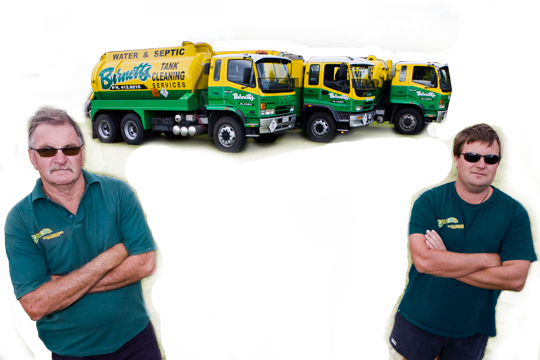How a Septic Tank Works
Your household liquid waste flows from the house into the septic tank where the sewage undergoes a settlement process and is partially treated
by bacteria.
This partially treated waste then travels from the tank to a disposal or absorption field, where it is further broken down by natural processes.
The type of disposal field depends on soil type, the slope of the section, vegetation and underlying rock.
Your septic system is a living ecosystem where bacteria do the work of digesting and treating waste.
The septic tank retains fats and solids, and releases the liquid portion of the waste. This liquid effluent flows into the disposal field and is
further treated by the soil.
A healthy septic tank is a well balanced ecosystem where good bacteria thrive in the right amounts to digest waste and treat the effluent water.
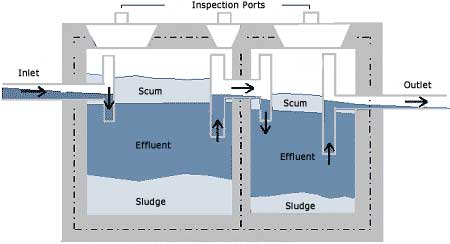
The contents of a healthy septic tank form 3 layers
- A layer of fats called scum, which floats on the surface of the liquid waste.
- A layer of clear liquid waste called effluent.
- A layer of solids called sludge, which sinks to the bottom.
The heavier, solid particles in the sewage settle to the bottom of the tank forming a layer of sludge. Lighter materials, including fat and
grease, float to the surface forming the scum layer.
Bacteria living in the septic tank break down some of the organic solids into liquid components, helping to reduce the build-up of sludge in the tank.
The scum helps prevent odours escaping and stops air entering. The treated effluent flows out of the tank through an outlet pipe as new waste-water enters.
At this stage the effluent still contains large amounts of dissolved pollutants including salts and nutrients such as compounds of nitrogen and phosphorus.
It also contains disease causing pathogens such as viruses, bacteria and worms.

In the absorption field, natural soil processes kill off more pathogens and break down some of the nutrients that cause pollution. This is a slow process, and soil bacteria need oxygen to work, so it is important not to overwhelm the soil with too much effluent. In time the effluent evaporates, is taken up by plants nearby or is leaches into the groundwater zone. A hazard is created when effluent flows along surface or subsoil pathways into drainage channels, creeks or rivers.
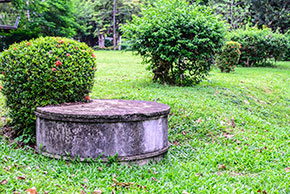
Septic Tank Cleaning
If you own a septic system, it is important that it be properly maintained. Septic tanks should be cleaned on a regular basis to allow proper drainage and to prevent costly destruction of your septic trenches.
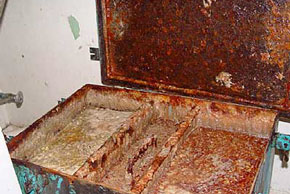
Grease Trap Cleaning
Proper cleaning and maintaining of your grease trap is essential to help prevent problem situations such as odours, backups, failed inspection, excessive pumping, and overall unsafe sanitary conditions.
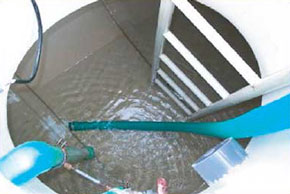
Water Tanks
If you rely on a rain water collection system for your household water, it is essential to have your Water Tanks cleaned out on a regular basis. This will help keep your Drinking Water free of contaminants and sludge.
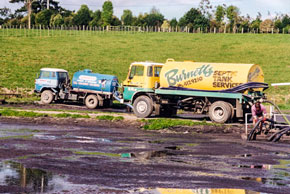
Grey Water & Sullage
Burnetts Tank Services are able to safetly dispose of all non-hazadous liquid waste. This includes Grey Water, Cesspits, Drilling Mud, Concrete Slurry Wash, Pond Cleaning, Portable Toilet Waste, Oily Waters and Holding Tanks.




